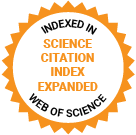Journal of Medical Internet Research
The leading peer-reviewed journal for digital medicine and health and health care in the internet age.
Editor-in-Chief:
Gunther Eysenbach, MD, MPH, FACMI, Founding Editor and Publisher; Adjunct Professor, School of Health Information Science, University of Victoria, Canada
Impact Factor 5.8 CiteScore 14.4
Recent Articles

Effective interprofessional communication, including politeness, respect for coworkers, and self-control, is crucial in emergency care. These values are emphasized by both Thai and US cultures. Notably, nurses place greater significance on respect and self-control than physicians, underscoring the need for physicians to recognize and adopt these attributes, especially in interactions with nursing staff. To develop these competencies, interprofessional education (IPE) programs are essential, with simulation-based IPE, particularly virtual simulations, showing promise in enhancing teamwork and communication. However, research on the tone of voice in emergency communication is limited, especially in Thailand, where standardized IPE curricula are lacking.

Breast cancer is one of the most prevalent cancers among women and significantly impacts psychological well-being and health-related quality of life (HR-QoL) during the perioperative period. Mobile health interventions offer a promising approach to providing education and psychosocial support, yet their effectiveness in this context remains underexplored.


Identifying patients with inherited colorectal cancer (CRC) syndromes offers many potential benefits. However, individuals often experience decisional conflict regarding genetic testing for CRC, and the uptake rate remains low. Given the growing popularity of genetic testing and the increasing demands on genetic service providers, strategies are needed to promote informed decision-making, increase genetic testing uptake among at-risk individuals, and ensure the rational use of genetic service resources.

![Effects of an e-Learning Program (Physiotherapy Exercise and Physical Activity for Knee Osteoarthritis [PEAK]) on Chinese Physical Therapists’ Confidence and Knowledge: Randomized Controlled Trial Article Thumbnail](https://asset.jmir.pub/assets/b8c2a37e799f229f9ac10d3b80a3991b.png)

Endometrial cancer is one of the most common gynecological tumors, and early screening and diagnosis are crucial for its treatment. Research on the application of artificial intelligence (AI) in the diagnosis of endometrial cancer is increasing, but there is currently no comprehensive meta-analysis to evaluate the diagnostic accuracy of AI in screening for endometrial cancer.

Pediatric respiratory diseases, including asthma and pneumonia, are major causes of morbidity and mortality in children. Auscultation of lung sounds is a key diagnostic tool but is prone to subjective variability. The integration of artificial intelligence (AI) and machine learning (ML) with electronic stethoscopes offers a promising approach for automated and objective lung sound.

There is burgeoning interest in the application of neuroscientific technology to facilitate meditation and lead to beneficial psychological outcomes. One popular approach is using consumer-grade neurofeedback devices to deliver feedback on brain targets during meditation (mindfulness-based neurofeedback). It is hypothesized that optimizing brain targets like alpha and theta band activity may allow meditators to experience deeper mindfulness and thus beneficial outcomes.

Canadian public safety personnel (PSP) report high rates of mental health concerns and barriers to treatment. PSPNET is a clinical research unit that offers internet-delivered cognitive behavioral therapy (ICBT) that is free, confidential, and developed with and for PSP. Treatment outcomes are promising with clinically significant symptom improvement (eg, anxiety, depression, and posttraumatic stress) and favorable treatment satisfaction. While these results are promising, research has yet to explore ways to optimize therapist-guided ICBT for leaders within public safety. Optimizing ICBT for leaders is particularly important given their widespread organizational impact.

The global COVID-19 pandemic’s mental health impact was primarily studied in the initial year of lockdowns but remained underexplored in subsequent years despite evolving conditions. This study aimed to address this gap by investigating how COVID-19–related factors, including nationwide COVID-19 deaths and incidence rates, influenced mental health indicators over time.

The need for health care underpins health care service provision and serves as the foundation for enhancing service capacity and allocating resources. Health care needs are influenced by health, social, and economic conditions and may exhibit different characteristics over time. However, previous studies have primarily focused on specific populations or types of needs, overlooking the diversity and complexity of residents’ health care requirements. Furthermore, as informatization becomes a defining aspect of modern social development, the impact of internet utilization on the co-occurrence of health care needs remains unclear.
Preprints Open for Peer-Review
Open Peer Review Period:
-
Open Peer Review Period:
-
Open Peer Review Period:
-
















